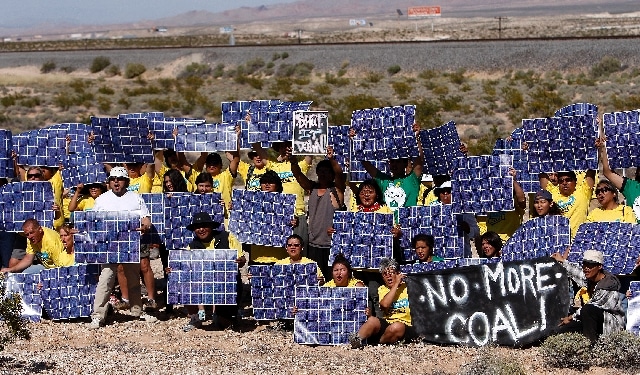The Los Angeles Department of Water and Power (LADWP) has ended its much-contested use of coal at the Navajo Generating Station four years early since the state has met its 25% renewable energy portfolio goal early. LADWP’s renewable energy level has increased to 25% from just 6% 10 years ago.
Reiko Kerr, LADWP senior assistant general manager of power system engineering, planning, and technical studies, says. “Our Nevada projects have allowed us to stop receiving coal power from the Navajo Generating Station in 2016—four years ahead of the required deadline.”
The substitution of coal was possible due to the completion of the 250-megawatt (MW) Moapa Southern Paiute Solar Project and several other new large-scale solar facilities that began delivering clean power to Los Angeles by the end of 2016.
Along with the Moapa facility, these include three large solar plants in the Mojave Desert. In 2015, LADWP also began receiving its share of solar power—210 MW—from Copper Mountain 3 Solar Project near Boulder City, Nev., bringing the total amount of solar power coming to Los Angeles generated from outside the city to 870 MW.
Locally, over 192 MW of solar energy is generated by customer-owned solar rooftop or ground-mounted projects, while about 20 MW of local solar comes to the LA power grid via the Feed-in Tariff Program, through which LADWP purchases power produced by privately owned small-scale projects within the city.%The utility is also on track to meet the next milestones of 33% of renewable energy sales by 2020, 55% by 2030 and 65% or more by 2036, and is studying the feasibility of going beyond that. “We are looking at what it would take in terms of resources, capability and costs to achieve 100 percent clean energy in the future,” LADWP General Manager David H. Wright said.
Mayor Eric Garcetti said, “There is much more work to do, and we will never stop working until we reach all of the ambitious renewable energy and emission reduction goals outlined in my administration’s Sustainable City pLAn.”
This content is protected by copyright and may not be reused. If you want to cooperate with us and would like to reuse some of our content, please contact: editors@pv-magazine.com.









By submitting this form you agree to pv magazine using your data for the purposes of publishing your comment.
Your personal data will only be disclosed or otherwise transmitted to third parties for the purposes of spam filtering or if this is necessary for technical maintenance of the website. Any other transfer to third parties will not take place unless this is justified on the basis of applicable data protection regulations or if pv magazine is legally obliged to do so.
You may revoke this consent at any time with effect for the future, in which case your personal data will be deleted immediately. Otherwise, your data will be deleted if pv magazine has processed your request or the purpose of data storage is fulfilled.
Further information on data privacy can be found in our Data Protection Policy.